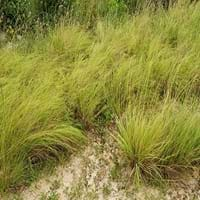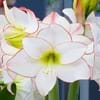Life Span
Perennial
Perennial
Type
Bulb or Corm or Tuber
Grass
Origin
Hybrid origin
Eastern Africa, Southern Africa
Types
Not Available
Robusta blue, Robusta green, Curvula
Number of Varieties
Not Available
Habitat
tropical environments
Cultivated Beds
USDA Hardiness Zone
8-11
7-13
AHS Heat Zone
Not Available
12 - 10
Sunset Zone
21,22
4, 5, 6, 7, 8, 9, 10, 11, 12, 13, 14, 15, 16, 17, 18, 19, 20, 21, 22, 23, 24
Habit
Clump-Forming
Clump-Forming
Flower Color
White, Red, Light Pink
Gray, Lavender
Flower Color Modifier
Bicolor
Bicolor
Fruit Color
Green, Brown
Gray Green, Silver
Leaf Color in Spring
Green, Dark Green
Green, Dark Green
Leaf Color in Summer
Light Green
Light Green
Leaf Color in Fall
Several shades of Green
Dark Green, Bronze
Leaf Color in Winter
Light Green
Yellow, Dark Green, Bronze
Leaf Shape
Long Linear
Grass like
Plant Season
Spring, Summer, Winter
Summer, Fall, Winter
Sunlight
Full Sun, Partial Sun
Full Sun
Type of Soil
Loam, Sand
Loam, Sand
The pH of Soil
Acidic, Neutral
Acidic, Neutral, Alkaline
Soil Drainage
Well drained
Well drained
Bloom Time
Not Available
Late Summer, Early Fall
Tolerances
Deer resistant
Drought
Where to Plant?
Container, Ground, Pot
Ground
How to Plant?
Divison, From Rhizomes, Tubers
Seedlings
Plant Maintenance
Low
Medium
Watering Requirements
Average Water Needs
Average Water Needs
In Summer
Lots of watering
Lots of watering
In Spring
Moderate
Moderate
In Winter
Average Water
Average Water
Soil pH
Acidic, Neutral
Acidic, Neutral, Alkaline
Soil Type
Loam, Sand
Loam, Sand
Soil Drainage Capacity
Well drained
Well drained
Sun Exposure
Full Sun, Partial Sun
Full Sun
Pruning
Cut or pinch the stems, Remove damaged leaves, Remove dead branches, Remove dead leaves
Cut back old stems to the ground
Fertilizers
as it is a flowering plant, use high phosphorous content fertilizer, Nitrogen, Phosphorous, Potassium, Requires high amount of nitrogen
Requires high amount of nitrogen
Pests and Diseases
Aphids, Grasshoppers, Mealybugs, Mites, Red blotch, Slugs, Snails
No serious insect or disease problems
Plant Tolerance
Deer resistant
Drought
Flower Petal Number
Not Available
Single
Edible Fruit
Not Available
No
Fragrant Flower
Not Available
No
Foliage Texture
Medium
Fine
Foliage Sheen
Glossy
Matte
Attracts
Bees, Butterflies, Hummingbirds
Not Available
Allergy
poisonous if ingested
conjunctivitis, Pollen
Aesthetic Uses
Beautification, Bouquets, Cottage Garden, Showy Purposes
Borders, Showy Purposes
Beauty Benefits
Not Available
Not Available
Environmental Uses
Not Available
Erosion control
Medicinal Uses
Not Available
No Medicinal Use
Part of Plant Used
Flowers
Leaves, Seeds
Other Uses
Used as Ornamental plant, Used for bedding in gardens
Used as a grain, Used to make baskets, brooms, hats
Used As Indoor Plant
Yes
No
Used As Outdoor Plant
Yes
Yes
Garden Design
Container, Cutflower, Houseplant, Mixed Border, Tropical
Bedding Plant, Container, Edging, Groundcover, Mixed Border, Rock Garden / Wall
Botanical Name
HIPPEASTRUM 'Picotee'
ERAGROSTIS curvula
Common Name
Florist Amaryllis, Hippeastrum, Picotee Hippeastrum
Weeping Lovegrass
In Hindi
HIPPEASTRUM
Weeping Lovegrass
In German
HIPPEASTRUM
Weinend lovegrass
In French
HIPPEASTRUM
Weeping lovegrass
In Spanish
Hippeastrum
Pasto llorón
In Greek
Hippeastrum
κλάμα Lovegrass
In Portuguese
HIPPEASTRUM
chorando lovegrass
In Polish
Hippeastrum
Płacząca Lovegrass
In Latin
Hippeastrum
Plorans Lovegrass
Phylum
Magnoliophyta
Magnoliophyta
Class
Magnoliopsida
Liliopsida
Order
Asparagales
Cyperales
Family
Amaryllidaceae
Poaceae
Genus
Amaryllis
Eragrostis
Clade
Angiosperms, Monocots
Angiosperms, Commelinids, Monocots
Tribe
Not Available
Eragrostideae
Subfamily
Amaryllidoideae
Chloridoideae
Number of Species
Not Available
Season and Care of Hippeastrum and Weeping Lovegrass
Season and care of Hippeastrum and Weeping Lovegrass is important to know. While considering everything about Hippeastrum and Weeping Lovegrass Care, growing season is an essential factor. Hippeastrum season is Spring, Summer and Winter and Weeping Lovegrass season is Spring, Summer and Winter. The type of soil for Hippeastrum is Loam, Sand and for Weeping Lovegrass is Loam, Sand while the PH of soil for Hippeastrum is Acidic, Neutral and for Weeping Lovegrass is Acidic, Neutral, Alkaline.
Hippeastrum and Weeping Lovegrass Physical Information
Hippeastrum and Weeping Lovegrass physical information is very important for comparison. Hippeastrum height is 38.10 cm and width 30.10 cm whereas Weeping Lovegrass height is 90.00 cm and width 90.00 cm. The color specification of Hippeastrum and Weeping Lovegrass are as follows:
Hippeastrum flower color: White, Red and Light Pink
Hippeastrum leaf color: Green and Dark Green
Weeping Lovegrass flower color: Gray and Lavender
- Weeping Lovegrass leaf color: Green and Dark Green
Care of Hippeastrum and Weeping Lovegrass
Care of Hippeastrum and Weeping Lovegrass include pruning, fertilizers, watering etc. Hippeastrum pruning is done Cut or pinch the stems, Remove damaged leaves, Remove dead branches and Remove dead leaves and Weeping Lovegrass pruning is done Cut back old stems to the ground. In summer Hippeastrum needs Lots of watering and in winter, it needs Average Water. Whereas, in summer Weeping Lovegrass needs Lots of watering and in winter, it needs Average Water.





